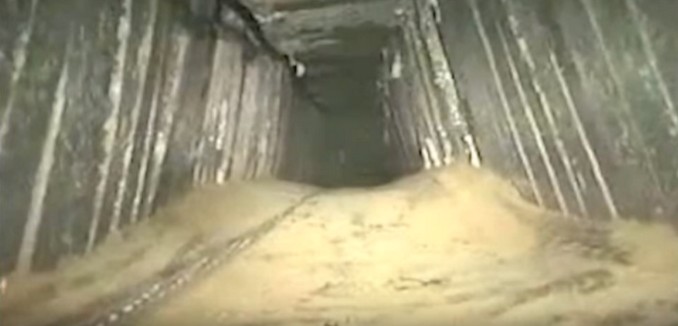The Israeli Defense Forces (IDF) offered reporters more details of the recently discovered and destroyed terror tunnels built from Gaza into Israel, The Times of Israel reported Thursday.
The IDF dug the Palestinian Islamic Jihad tunnel that was destroyed in late October, working in shifts around the clock except on Fridays, to build the tunnels. They dug an estimated ten to twenty meters (eleven to twenty-two yards) a day. The diggers didn’t hide the sand they displaced and created dunes at the Gaza openings to the tunnels.
Following the destruction of the tunnel, PIJ vowed revenge and launched a number of rocket attacks into Israel. Until then, Israel’s border with Gaza had been one of the most peaceful in recent times.
The IDF said that while neither Israel nor Hamas wants a conflict at this time, the possibility of escalation is high. The economic situation in Gaza is bad with unemployment about 50% and low wages for jobs that are available. In addition, trucks bringing commercial goods into Gaza have decreased by 50% recently. This is because Hamas spends its resources on building up its arsenal, an IDF officer explained. “A lack of money is not the problem in Gaza,” he observed.
In addition, Israel is continuing to build a 65 kilometer (40 mile) underground wall around Gaza, called “the barrier,” to prevent the construction of terror tunnels into Israel. The IDF is concerned that Hamas, realizing that its most potent weapon may soon be cut off, will try to launch an attack into Israel through one of its remaining tunnels.
Currently, only about four kilometers (2.5 miles) of the barrier has been constructed. The IDF expects that by the end of the year about half the barrier will be completed and that it will be finished some time in 2019. Priority has been given to the communities that are considered most at-risk for a terror attack launched from a tunnel.
Once the barrier is completed, the IDF expects that Hamas will turn to drones, sea-based attacks, and more advanced missiles to threaten Israel.
[Photo: euronews (en français) / YouTube]




